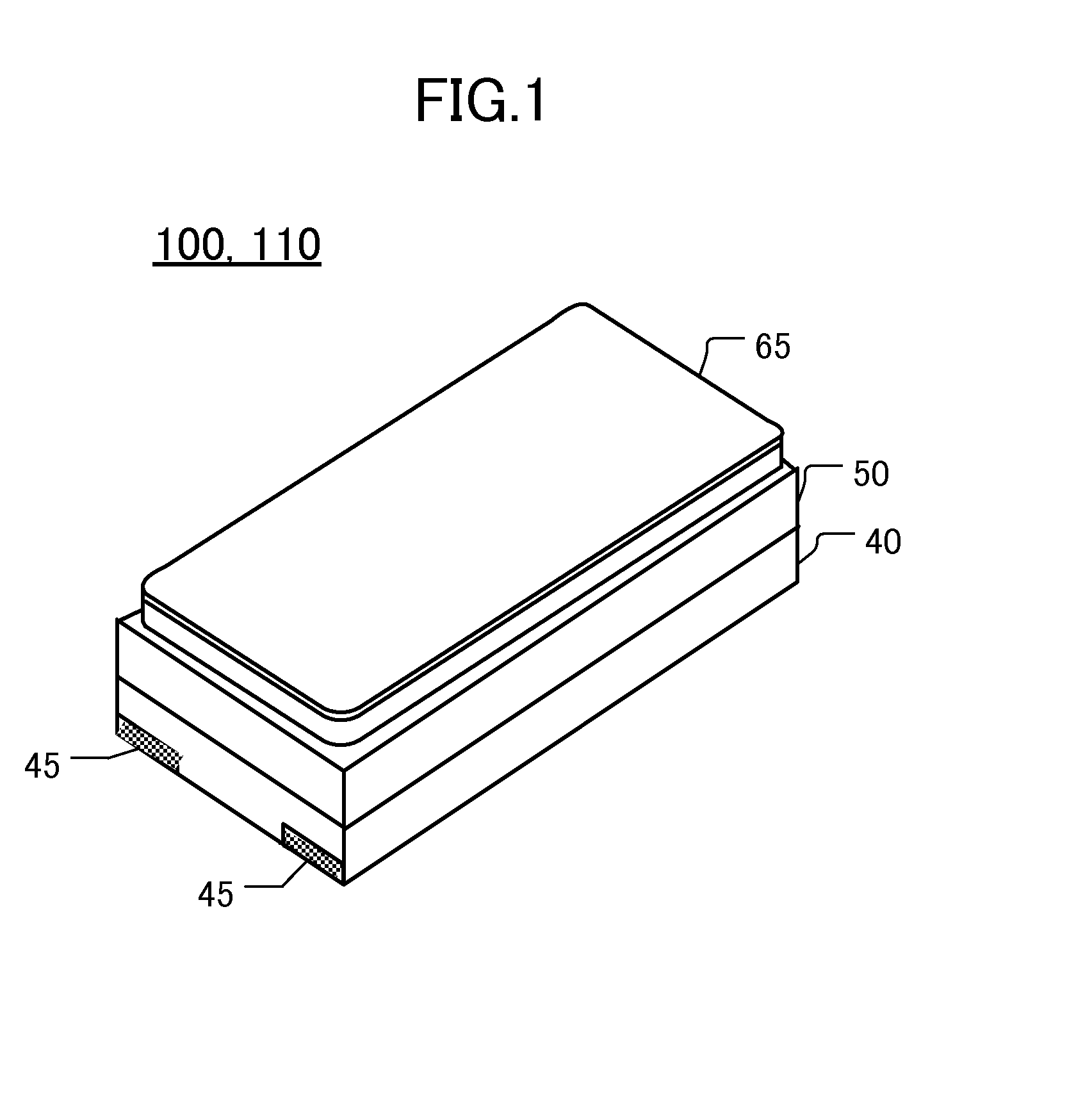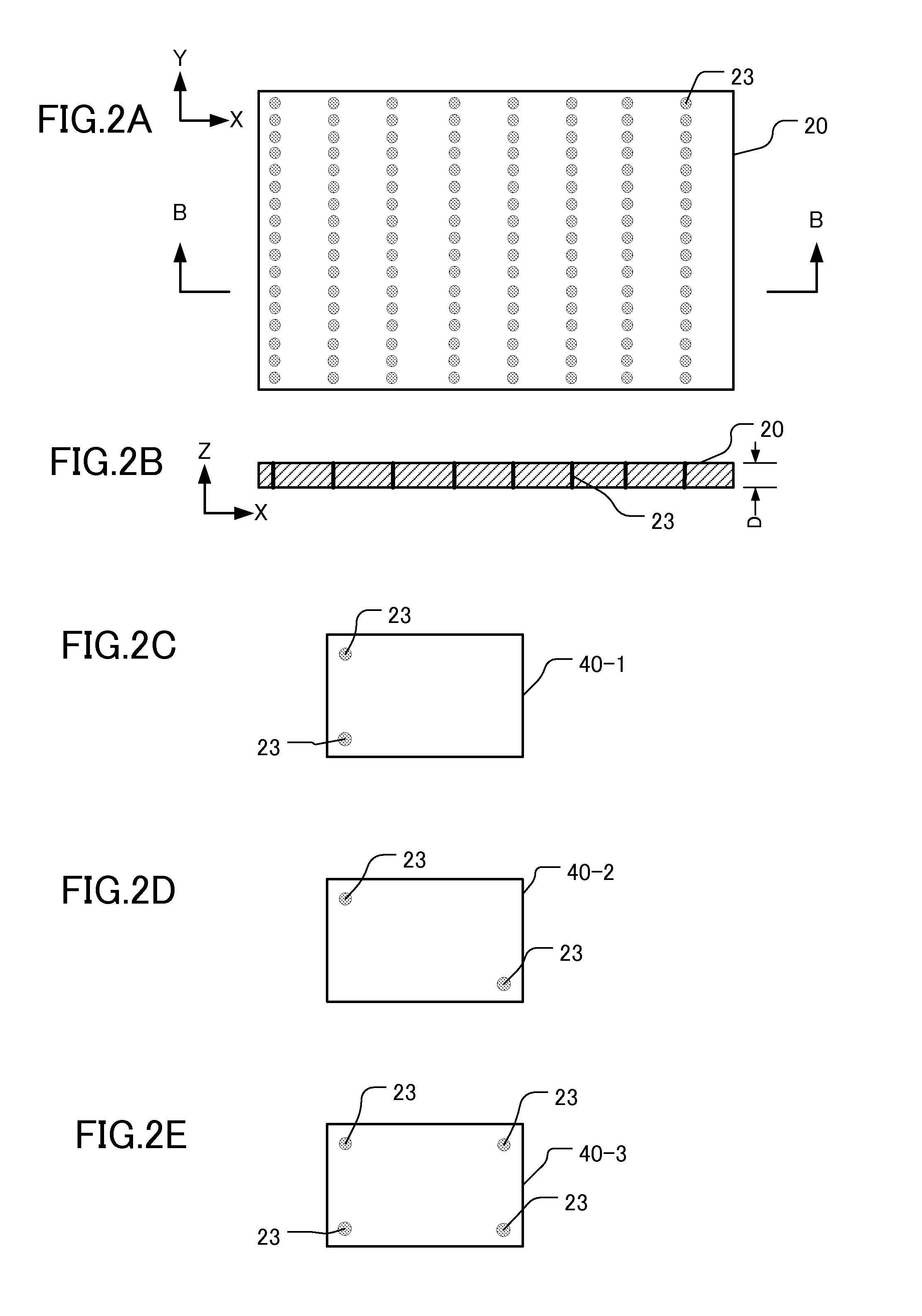Piezoelectric devices and methods for manufacturing same
a technology of piezoelectric devices and manufacturing methods, applied in the field of piezoelectric devices, can solve the problems of difficult mass production (with consequent item cost reduction) and achieve the effects of improving the electrical conductivity of wires, superior electrical conductivity, and increasing the affinity of wires
- Summary
- Abstract
- Description
- Claims
- Application Information
AI Technical Summary
Benefits of technology
Problems solved by technology
Method used
Image
Examples
first embodiment
of Crystal Unit
[0057]A crystal unit 100 (as an exemplary piezoelectric device) according to this embodiment is shown in FIGS. 4A-4D, which are schematic views. FIG. 4A is an elevational section along the line X-X in FIG. 4C, FIG. 4B is a plan view of the under (inner) surface of the lid 65 of the package, FIG. 4C is a top (plan) view of the crystal frame 50, and FIG. 4D is a top (plan) view of the first base 40.
[0058]In FIG. 4A the crystal unit 100 includes a crystal frame 50 in which a tuning-fork type crystal vibrating piece 30 is situated centrally. A first base 40 is attached to the bottom surface of the crystal frame 50, and a first lid 65 is attached to the top surface of the crystal frame 50. In the crystal frame 50 the tuning-fork type crystal vibrating piece 30 was formed from a crystal wafer 10 by etching.
[0059]As FIG. 4B shows, the lid 65 has a lid concave portion 67 formed by etching of the surface of the first lid on the crystal-frame side thereof. The first lid 65 can ...
second embodiment
of Crystal Unit
[0069]A crystal unit 110 according to this embodiment is described with reference to the schematic views shown in FIGS. 5A-5D. FIG. 5A is an elevational section along the line X-X in FIG. 5C, FIG. 5B is a plan view of the lower (inner) surface of the second lid 65′, FIG. 5C is a top plan view of the crystal frame 50, and FIG. 5D is a top view of the second base 40′.
[0070]In FIG. 5A the crystal unit 110 comprises a crystal frame 50 of which a tuning-fork type crystal vibrating piece 30 is a central portion. A second base 40′ is attached to the lower surface of the crystal frame 50 and a second lid 65′ is attached to the upper surface of the crystal frame 50.
[0071]Turning to FIG. 5B, the second lid 65′ includes a lid concave portion 67′ formed on the under-surface thereof. This under-surface will be situated inside the completed package. The lid concave portion 67′ is formed by etching of the lid material to a defined depth. The under-surface of the second lid 65′ also ...
PUM
| Property | Measurement | Unit |
|---|---|---|
| thickness | aaaaa | aaaaa |
| length | aaaaa | aaaaa |
| width | aaaaa | aaaaa |
Abstract
Description
Claims
Application Information
 Login to View More
Login to View More - R&D
- Intellectual Property
- Life Sciences
- Materials
- Tech Scout
- Unparalleled Data Quality
- Higher Quality Content
- 60% Fewer Hallucinations
Browse by: Latest US Patents, China's latest patents, Technical Efficacy Thesaurus, Application Domain, Technology Topic, Popular Technical Reports.
© 2025 PatSnap. All rights reserved.Legal|Privacy policy|Modern Slavery Act Transparency Statement|Sitemap|About US| Contact US: help@patsnap.com



